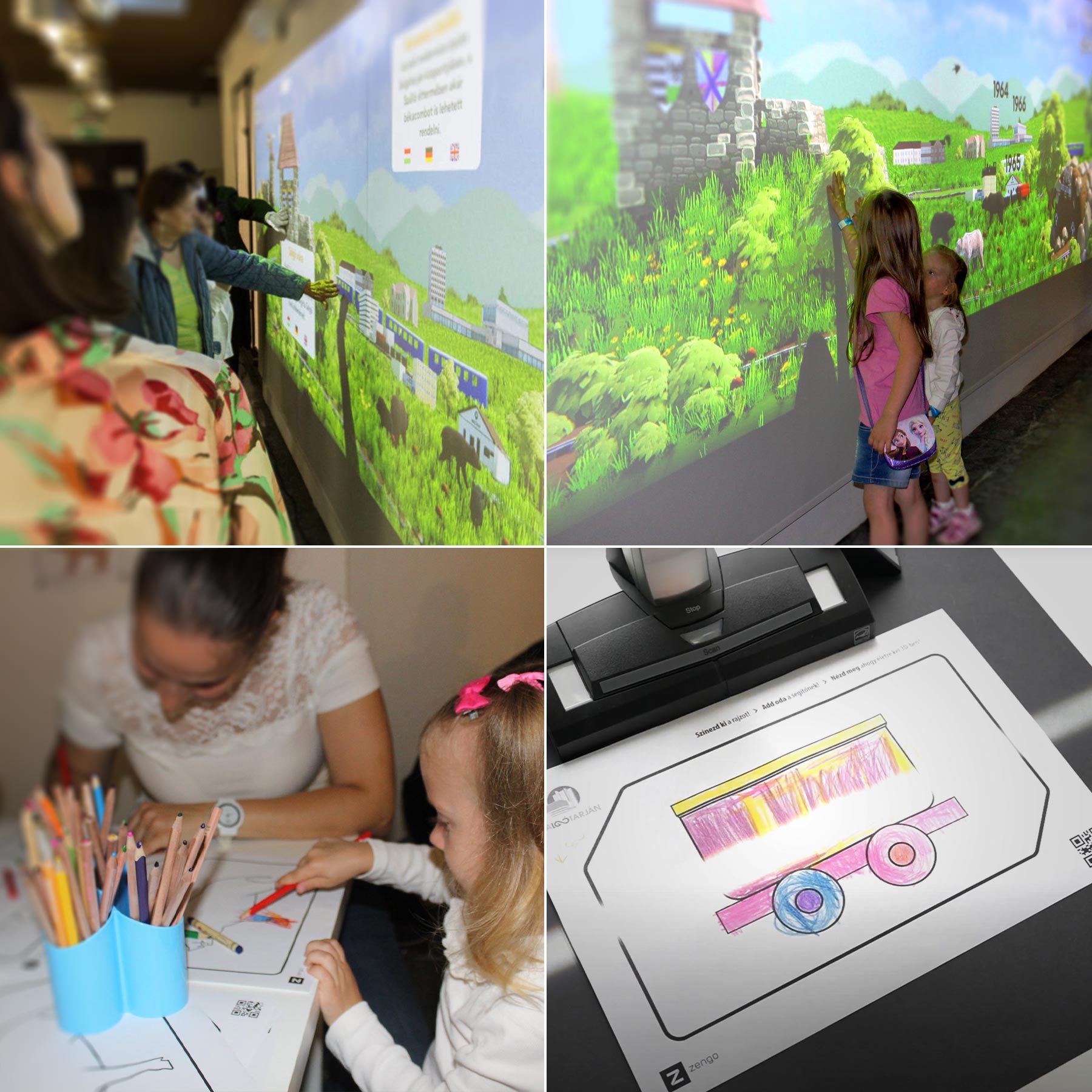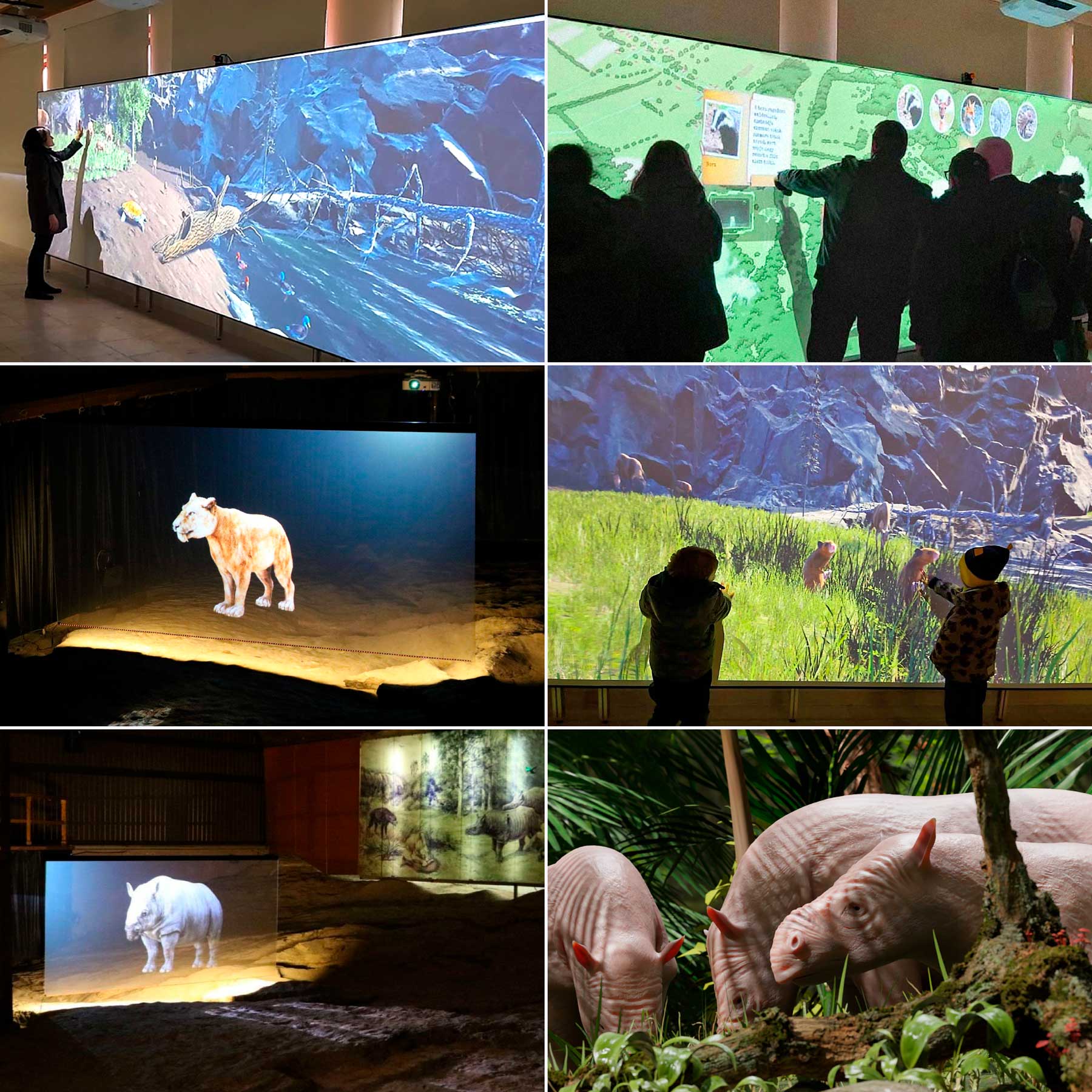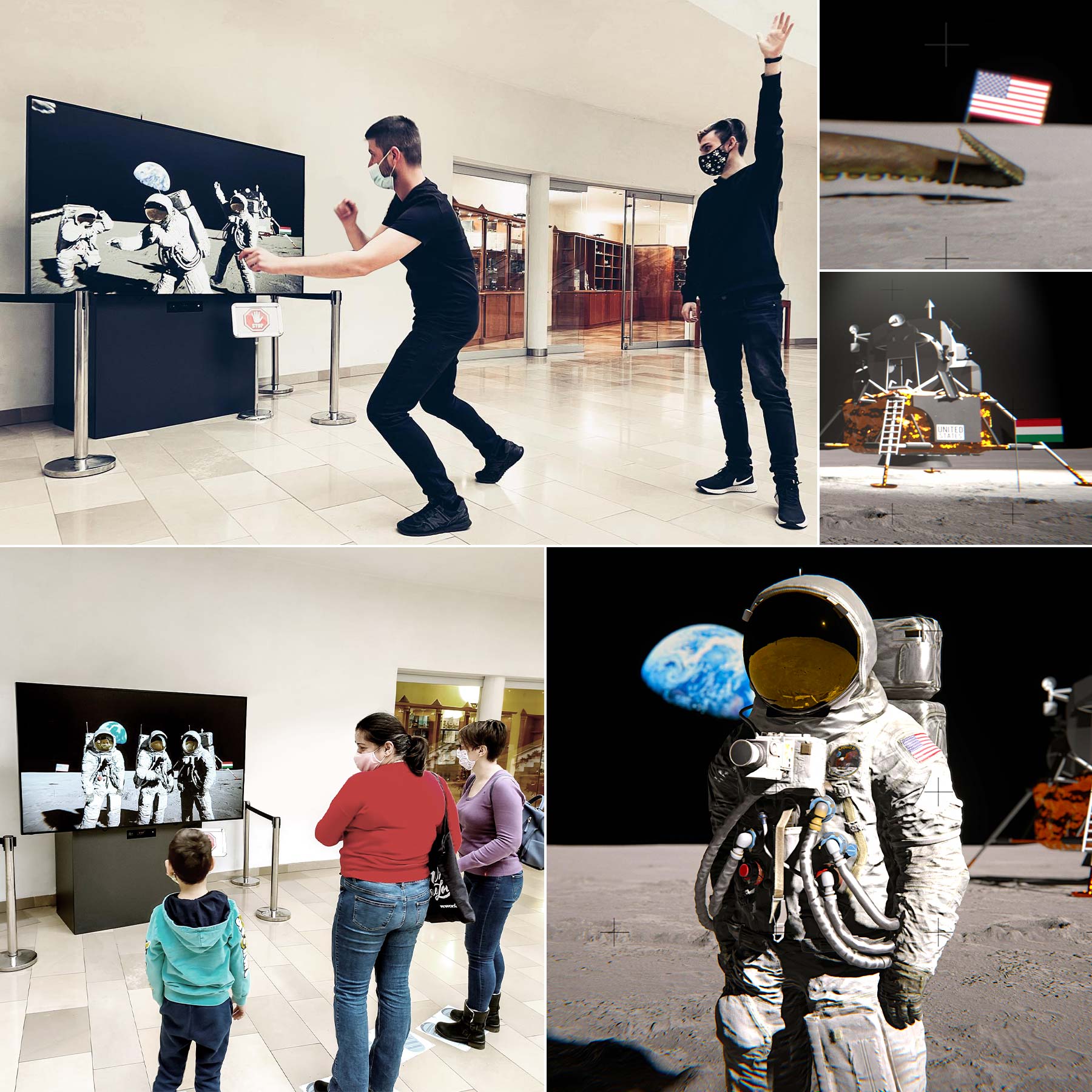Virtual AR dressing games, interactive displays that fill huge walls, projected digital maps, VR experiences - these are just a few examples of how modern hardware technologies and game development tools can be used to enhance visitor experiences and create a wow factor. Interested in the topic? Read on!
It is already common to find kiosks displaying digital content, running simple games in museums, visitor centers, festivals, and various events. However, these simple, content management software-equipped touchscreen information desks are increasingly being supplemented, and even displaced by more creative and interactive experiences that offer 3D, AR or VR attractions.

How are they made?
Creating the aforementioned experiences requires different hardware, development solutions, and graphic expertise than traditional content management apps. Whether it is pre-rendered and played back as a video, or rendered in real-time 3D, running such attractions requires high-performance configurations that rival gamer PCs. Depending on the usage, modern projectors or large touchscreens are needed for display. Due to the nature of the attraction, webcams, Azure Kinect or Intel Realsense cameras, Lidar sensors, and VR headsets can also be used to expand the required hardware.
Content production is not simpler either. In addition to 2D/UI graphic designers, 3D graphic designers and animators are needed for creating content, setting up spaces, lighting and effects. Depending on the attraction, sound effects and music are also crucial to increase immersion.
In the case of real-time rendering, in addition to 3D editing software, a development environment with graphic editors is also required, where these 3D contents can be placed, complex scenes can be built from them, and an application can be developed around them.

The world of RT3D
Such complex software and solutions are offered by the very popular RT3D/game development tools nowadays. The abbreviation stands for real-time 3D composition, which means on the one hand the real-time, runtime calculated rendering of contents (as opposed to pre-rendered frames in animated films), and on the other hand, there is an important emphasis on interaction and the ability of visitors to shape the content.
Before the term was coined, game development tools available on the market were simply used to create such content. Among these tools, the two most well-known ones may even sound familiar to those who are not familiar with the profession: Unreal Engine developed by Epic Games and Unity developed by Unity Technologies.
Godot Engine is one of the standout players, which, although in many ways falls short of the leading competitors, can be a great choice for smaller projects due to its freeness, growing developer community, and rapidly expanding, serious features. Therefore, any interactive multimedia application can be created with them, and accordingly, they are used in the film industry, automotive industry, architectural visualization, digital product display, and simulations, among other industries.
As a result of this diversity and the successful applications in various industries, these tools are no longer defined solely as game development tools. Epic Games refers to the Unreal Engine as a real-time 3D creation tool, and Unity Technologies refers to Unity as a real-time 3D content creation platform.
At Zengo, the primary focus of the AR/VR team is producing interactive visitor experiences, attractions, and developing VR applications for educational purposes, and we primarily use Unity for these projects.

Why Unity?
One reason why Unity is good for development is that it is easy to learn, yet complex applications can be made with it with adequate expertise. It is easily expandable, and a significant amount of online knowledge has accumulated with its use.
To demonstrate how easy it is to use, this past year we introduced Unity to upper-grade elementary school students in the Creativ_IT summer camp, and in a few hours, they used the graphic editor to decorate the space with 3D objects, used transformation tools, adjusted lighting and materials, and developed control with visual programming in a half-finished game.
Another significant advantage is that, like Flutter used by the Zengo Mobile team, Unity is a cross-platform development tool. There are hardly any opponents regarding the number of supported platforms. It is suitable for all major desktop and mobile platforms, VR headsets, consoles and TVs, or even web-based builds for browsers, while it is sufficient to work on a single project and develop our application once.
Programming in Unity is done in C#, which is a very popular and one of the most widely used programming languages, so much so that it is the 5th most popular in the world in terms of popularity.
There is another important argument for Unity, and that is the Asset Store. This is essentially an integrated store in the tool, where we can buy graphic and other media content, as well as tools, completed features, shaders, effects from other developers specifically compatible with Unity, significantly speeding up the development of an application, especially a prototype.
Are you interested in Unity?
We encourage anyone interested in game development, graphic programming, or simply creating to try Unity. Downloading, using, and distributing applications made in it is free with a personal license.
Would you like to read more about the topic?
Sources:
- https://www.unrealengine.com/en-US
- https://unity.com/our-company
- https://inspirationtuts.com/is-unity-good-for-beginners/
- https://unity.com/solutions/architecture-engineering-construction/rt3d-explained
- https://www.museumnext.com/article/how-are-museums-harnessing-immersive-technology-to-provide-experiences/
- https://www.museumnext.com/article/how-museums-are-using-virtual-reality/
- https://econsultancy.com/how-museums-are-using-immersive-digital-experiences/
- https://www.digitalmeetsculture.net/article/can-digital-immersive-experience-be-the-future-of-museums-collections/
- https://www.cosm.com/what-is-an-immersive-experience/
- https://blog.dotnetsafer.com/c-wants-to-become-the-most-popular-programming-language-in-2022/





